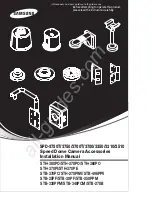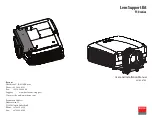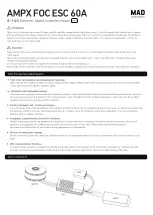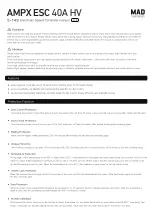
MT102 Information
82011-IM, REV J
Sandel SG102 & MT102 Installation Manual
Page 5-1
5
MT102 Information
5.1
Differences between the MT102 and a Fluxgate
The MT102 differs from a Fluxgate (such as a King KMT112) in significant ways. It is solid state and
there is not an internal moving pendulum. The MT102 is strapdown and detects the earth’s field
separately in the Pitch-Roll-Heading body axis of the aircraft. Because it is a strapdown sensor, the
axis’ orientations change when the aircraft attitude changes. The magnetic axis is then mathematically
leveled to produce the ‘level magnetic field’. This has a distinct advantage over a Fluxgate since the
MT102 does not have turning or acceleration errors due to the pendulum motion, so the system will
often remain more accurate during maneuvers.
5.2
Environmental
The MT102 is designed to be mounted in the physical environment of the wing or tail of the aircraft.
It has a unique upside-down mechanical design which provides a drip loop from the cable entry point.
For this reason it is essentially moisture proof.
5.3
Wiring
The MT102 is designed to be installed using the existing wires that originally ran to a fluxgate. The
original triplex-shielded cable is used for data and the original duplex excitation line is used for DC
power. This simplifies installation in retrofit applications.
It is often the case that the original fluxgate wiring is routed to an existing HSI and not to the existing
Gyro. In this case the MT102 wiring must be extended to reach the SG102 AHRS. See the
installation drawings for details.
5.4
Installation
The MT102 must be installed in alignment to the axis of the aircraft. In the event that the mounting
pad for the MT102 is not level with the aircraft, the MT102 should be shimmed using the same
measuring technique as is used to align the AHRS. If shimming is required, the washers or shim
stock must be brass, plastic or other nonmagnetic material. Non-magnetic stainless-steel may be used.
The MT102 alignment is important as it affects the accuracy of the heading in flight during
maneuvering. The MT102 has an alignment arrow that must be oriented parallel to the longitudinal
axis of the aircraft and pointed to the nose. For AHRS software 1.31 or later, this alignment is not
critical up to +/-10
º
but it is recommended it be as closely aligned as possible for good practice.
Alignment tooling holes are present and can be used to assist in installation (see figure 5-1).
Note: If the SG102 system is installed in an airplane
that has a second standard DG and Fluxgate, after
maneuvers the pilot may see a small heading split
between the two systems of a few degrees. It is likely
that this split is due to turning errors in the
DG/Fluxgate compass system. This will be visible in
















































